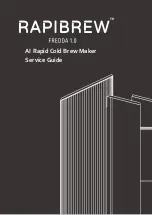
6
- Always wear protective goggles with transparent lenses to prevent splinters or
other foreign particles from harming the eyes (Fig. 5).
- Adequate local exhaust ventilation must be used in the area. It should be provided
through a mobile hood or through a built-in system on the workbench that provides
exhaust ventilation from the sides, the front and below, but not from above the bench
so as to avoid raising dust and fumes. Local exhaust ventilation must be provided
together with adequate general ventilation and air virculation, particularly when work
is done in a confi ned space. (Fig.6). Any symptom of stain or soreness to the eyes,
the nose or the throat may be cause by inadequate ventilation; work must be stopped
immediately and all necessary steps must be taken to rpovide adequate ventilation.
- Welding process must be performed on metal coatings thoroughly cleaned from
layers of rust or paint, to avoid production of harmful fumes. The parts degreased
with a solvent must be dried before welding.
- Do not weld metal or painted metal containing zinc, lead, cadmiun or beryllium
unless the operator, or anyone else subjected to the fumes, is wearing respiratory
equipment or an air-supplied helmet.
-
Technical and sanitary protection of all welding operators-directly or indirectly
involved in welding processes is provided by the regulations in force for sanitation
and prevention of employment related injuries.
FIG.5
FIG.6







































